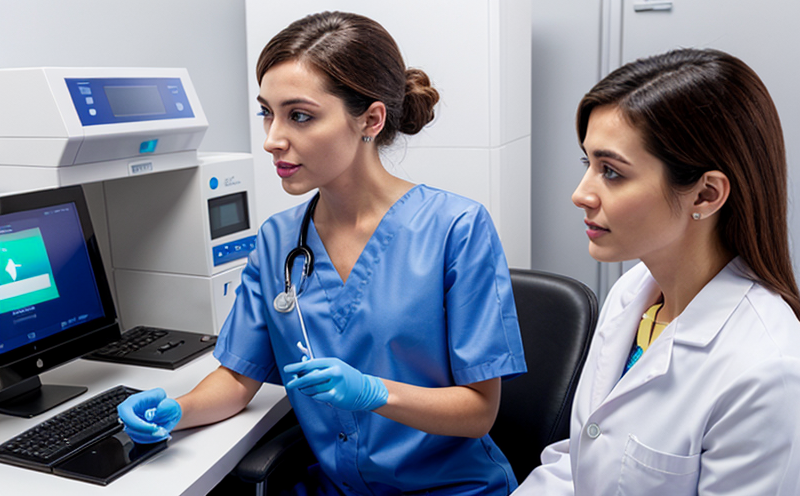RT-PCR Testing for Newcastle Disease Virus in Birds
RT-PCR (Reverse Transcription Polymerase Chain Reaction) testing is a critical diagnostic tool used to detect the presence of Newcastle disease virus (NDV), also known as avian paramyxovirus 1, in birds. NDV is an enveloped RNA virus that belongs to the Paramyxoviridae family and can cause significant respiratory, neurological, and enteric symptoms in domestic poultry such as chickens, turkeys, and ducks.
The disease not only affects livestock but also poses a risk to wildlife populations and potentially human health through zoonotic transmission. The global prevalence of NDV underscores the importance of accurate and rapid diagnostic testing methods like RT-PCR which have become essential in controlling outbreaks and maintaining biosecurity standards.
RT-PCR testing involves several key steps: RNA extraction from the specimen, reverse transcription to convert viral RNA into complementary DNA (cDNA), amplification using PCR technology, and finally detection of specific NDV sequences via real-time RT-qPCR. This method provides highly sensitive and specific results that are crucial for early detection and timely intervention.
In a controlled laboratory setting, the test requires well-trained technicians, state-of-the-art equipment including thermocyclers, spectrophotometers, and biohazard containment facilities. Specimens such as swabs from respiratory tracts or fecal samples need to be collected carefully under strict hygiene protocols to avoid contamination.
The process begins with the extraction of viral RNA using commercial kits approved for this purpose. Following extraction, reverse transcription converts the RNA into DNA which can then undergo PCR amplification. Real-time RT-qPCR allows monitoring of exponential growth during the reaction, enabling precise quantification and identification of NDV presence.
Accurate results are vital not only for immediate treatment but also to prevent further spread within farms or aviaries. Early detection through this testing can help implement effective quarantine measures, reduce mortality rates among affected birds, and minimize economic losses due to decreased egg production or carcass disposal costs.
Compliance with international standards such as those specified in ISO 15183 ensures reliability of diagnostic methods across different laboratories. Proper validation procedures ensure that all steps from sample collection through final result are consistent and reproducible, enhancing confidence in the accuracy of RT-PCR testing for NDV.
Scope and Methodology
| Step | Description |
|---|---|
| Sample Collection | Collection of respiratory or fecal samples from birds suspected to be infected with NDV. |
| RNA Extraction | Extraction of viral RNA using commercially available kits designed for this purpose. |
| Reverse Transcription | Conversion of extracted RNA into complementary DNA (cDNA) via reverse transcriptase enzyme. |
| Polymerase Chain Reaction | Amplification of specific NDV sequences using Taq polymerase and primers targeting known NDV genes. |
| Real-Time Quantitative PCR (RT-qPCR) | Detection of amplified products in real-time, allowing quantification of NDV RNA levels. |
Why Choose This Test
The RT-PCR test for Newcastle Disease Virus offers several advantages over traditional diagnostic methods. Its high sensitivity and specificity make it an ideal choice for accurate detection, even in low viral load samples. Early diagnosis enables prompt implementation of control measures such as culling or quarantine which can prevent the spread of disease within poultry populations.
From a broader perspective, this test supports biosecurity protocols by ensuring safe transportation and handling practices during outbreaks. It helps maintain public health standards by reducing zoonotic risks associated with NDV infection in birds. Additionally, compliance with international standards like ISO 15183 ensures reliability across different laboratories worldwide.
For research purposes, the precision of RT-PCR allows for detailed studies on viral pathogenesis and immunity responses. This information is crucial for developing vaccines and therapeutic strategies against NDV. In regulatory environments, adherence to such tests demonstrates commitment to maintaining high biosecurity standards and protecting both livestock and wildlife from potential outbreaks.
Furthermore, the reproducibility of results ensures consistent outcomes which are essential for effective disease management plans. By choosing RT-PCR testing, stakeholders can ensure that their operations meet stringent quality control measures and contribute positively towards sustainable farming practices.
International Acceptance and Recognition
- ISO 15183: This international standard sets guidelines for the diagnosis of infectious agents, including NDV, emphasizing the importance of accurate detection methods.
- ASTM E2697: Provides standards for performing RT-PCR assays on biological specimens, ensuring consistency and reliability in testing procedures.
- EN ISO 15183: European equivalent to the aforementioned standard, providing harmonized guidelines across EU member states.
- IEC 62974-1: Focuses on clinical laboratory safety requirements for in vitro diagnostic medical devices like those used in RT-PCR testing.





